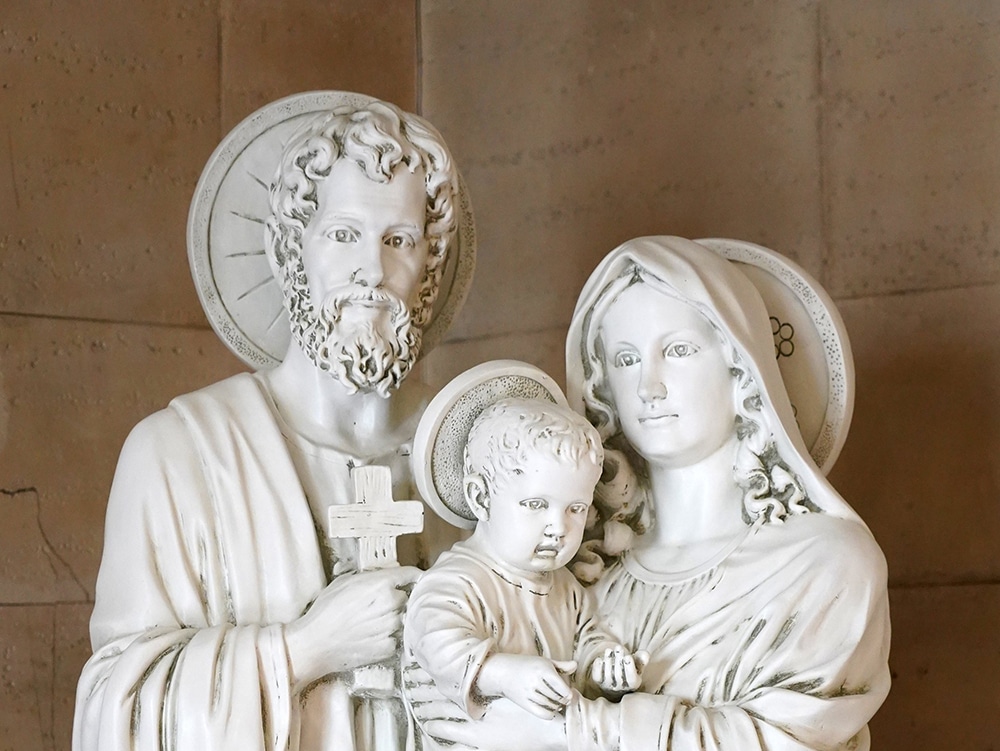 Question: To my understanding of Scripture, nothing is mentioned about Jesus’ life as a youth, pre-teen, young adult, etc. Certainly we know of his glorious birth, passionate death and triumphant resurrection, but is there any documentation of how he spent his early formative years?
Question: To my understanding of Scripture, nothing is mentioned about Jesus’ life as a youth, pre-teen, young adult, etc. Certainly we know of his glorious birth, passionate death and triumphant resurrection, but is there any documentation of how he spent his early formative years?
— Kristin R., West Covina, California
Answer: We do have a brief glimpse of him at age 12 as he surprises the scribes and elders of the law with his wisdom. It is also said that he returned to Nazareth and grew in age and grace and wisdom (cf. Lk 2:41-52). Other than this, we have little information about Jesus’ “hidden years.” There are some apocryphal accounts such as the “Infancy Narratives,” but they contain many odd details that strain credulity.
Part of the reason that accounts of childhood do not exist is that ink and paper or parchment were expensive. Such accounts and any copies of them were all hand-written, imposing more costs and time. Hence, the Gospel writers, like most ancient writers, were highly selective regarding the material they present.
Pastorally, however, the hidden quality of these years provides a reflective moment for us all. Pope St. Paul VI, when he visited Nazareth in 1964, captured well the mystery of these hidden years:
“First, we learn from its silence. If only we could once again appreciate its great value. We need this wonderful state of mind, beset as we are by the cacophony of strident protests and conflicting claims so characteristic of these turbulent times. The silence of Nazareth should teach us how to meditate in peace and quiet, to reflect on the deeply spiritual, and to be open to the voice of God’s inner wisdom and the counsel of his true teachers. … Second, Nazareth serve[s] as a model of what the family should be. May it show us the family’s holy and enduring character and exemplify its basic function in society … the perfect setting for rearing children — and for this there is no substitute. Finally, in Nazareth, the home of a craftsman’s son, we learn about work and the discipline it entails. … I would remind everyone that work has its own dignity.”
Hence, in these hidden years, the Lord shows us the beauty of our own hidden and ordinary lives. He teaches of the dignity of family life and of labor. Living in a small and humble village, engaging in labor and living among family, the Lord sanctifies these things and commends them to us as important and essential.
Anointing of the sick
Question: Would you please provide some clarity on the definitions of last rites, anointing of the sick and extreme unction?
— Paul VanHoudt, Erie, Colorado
Answer: These terms are used by many to refer to what the Church calls the Sacrament of the Anointing of the Sick. The Catechism of the Catholic Church defines this sacrament as follows: “By the sacred anointing of the sick and the prayer of the priests the whole Church commends those who are ill to the suffering and glorified Lord, that he may raise them up and save them. And indeed she exhorts them to contribute to the good of the People of God by freely uniting themselves to the Passion and death of Christ” (CCC, No. 1499).
“Last rites” is a common term but limits the understanding of the sacrament only to the dying. So, too, for the older title of “extreme unction,” a Latin-based word meaning “final anointing.” While those who are dying are surely appropriate candidates for the Sacrament of the Anointing of the Sick, so are those who are seriously ill or are facing surgery. The wider purpose of the sacrament is to minister to those who are seriously or chronically ill. The Catechism says: “Illness can lead to anguish, self-absorption, sometimes even despair and revolt against God. It can also make a person more mature, helping him discern in his life what is not essential so that he can turn toward that which is. Very often illness provokes a search for God and a return to him” (CCC, No. 1501). Hence the Sacrament of the Anointing of the Sick seeks to strengthen, comfort and bring healing to the sick in general, including the dying.
To limit our understanding of this sacrament only to the dying should be avoided. For this reason, the Church has avoided the term “last” in relation to this sacrament and made it essential to the care of all who are seriously ill as well.
Msgr. Charles Pope is the pastor of Holy Comforter-St. Cyprian in Washington, D.C., and writes for the Archdiocese of Washington, D.C. at blog.adw.org. Send questions to msgrpope@osv.com.







